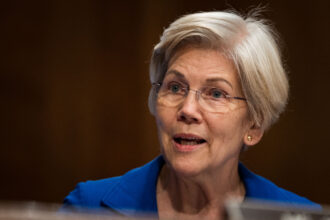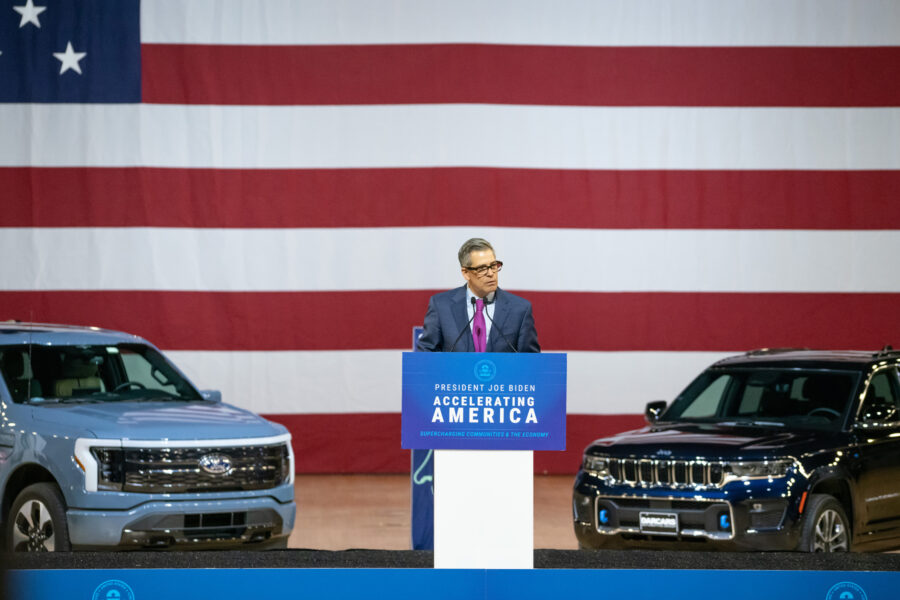Former President Donald Trump dismantled the pillars of U.S. climate policy when he exited the Paris climate accord and rolled back more than 100 regulations to protect air, water, endangered species and human health.
But it’s clear, as he officially assumes his role as the Republican nominee and standard bearer this week, that he altered American environmental protection in even deeper and more longer-lasting ways.
The United States returned to the Paris pact after Trump’s presidency, but he showed other populist leaders a way out of the global climate agreement, which is itself now unstable. While no other nation has as yet followed suit and walked away, pledges to cut carbon emissions—already inadequate, according to the scientific consensus—are weakening. Insurgent right-wing politicians in Europe have embraced the Trump doctrine, insisting that backing down from climate pledges can boost faltering economies.
President Joe Biden’s administration has reversed most of the regulatory rollbacks of his predecessor, but Trump left behind a conservative 6-3 majority on the Supreme Court that has already irrevocably changed environmental protection in America. The biggest shock came on June 28, when the court overturned a 40-year-old legal precedent that buttressed federal regulatory action. By dismissing the so-called “Chevron doctrine,” the court handed a legal advantage to those challenging aspects of Biden’s climate change agenda.
Trump’s international influence and his broader reshaping of the federal courts will hinder climate policy for years to come, leading environmentalists contend—a legacy they say will endure whether or not he is re-elected in November. If Trump does regain the White House, his allies expect him to further break from international cooperation on climate and free existing constraints on U.S. oil, gas and coal production.
But as Republicans convene this week in Milwaukee to make Trump their presidential nominee, don’t expect them to call climate change a “hoax,” as Trump himself did repeatedly on social media years before the 2016 election. By the time he became president, Trump showed an awareness of the political popularity of environmental protection. Instead of dismissing climate science, he talked about lifting the economic burden he said the Paris agreement imposed on the nation. He framed his actions as part of an America-first agenda of energy “dominance” that safeguarded the nation against competitors, particularly China. Eventually, he signed a well-received environmental law, the Great American Outdoors Act, and proposed long-overdue standards to reduce lead in drinking water.
“The President’s announcement and subsequent withdrawal from the Paris climate accord really shifted the dynamic from an exterior focus to putting Americans first,” said Mandy Gunasekara, who served as chief of staff at the Environmental Protection Agency during the Trump administration. “At EPA, what we called ‘back to basics’ was really getting EPA back to focusing on cleaning up the air, cleaning up the water, addressing legacy pollution and continuing to improve industrial efficiencies that lend itself to reducing greenhouse gases.”
Gunasekara, who is now a private consultant, was one of the Trump allies who co-authored Project 2025, a policy roadmap for a second Trump administration coordinated by the conservative Heritage Foundation, that foreshadows what environmental experts see as an even deeper dismantling of the nation’s environmental agencies than Trump accomplished during his first term in office.
Indeed, the vast majority of environmental activists see Trump’s few acts to support clean water and land conservation as window-dressing on an administration that devastated environmental protection and public lands, weakened America’s standing as a global leader and threatened the future health of the planet.
“The Trump administration was the most anti-environmental, anti-climate, anti-public health administration we’ve ever had, by far,” said Tiernan Sittenfeld, senior vice president for government affairs at the League of Conservation Voters. “It was just breathtaking the extent to which they rolled back protections for clean air, for clean water, for public lands … especially [for] the frontline and the fenceline communities of color that have been hit first and worse by toxic pollution for decades.”
Breaking a Bond Among Nations
Trump opened his presidency with broad executive orders: They rolled back regulation, approved major oil pipelines like Keystone XL and Dakota Access, and spurred U.S. fossil fuel production. Nevertheless, there were weeks of “Will he? Won’t he?” speculation, befitting of a former reality television star, on whether he would withdraw the U.S. from the Paris climate agreement.
“Could he be that extreme, that radical, that fringy, that out of touch with the rest of the world?” Sittenfeld recalls thinking. “Unfortunately, the answer was a resounding yes.”
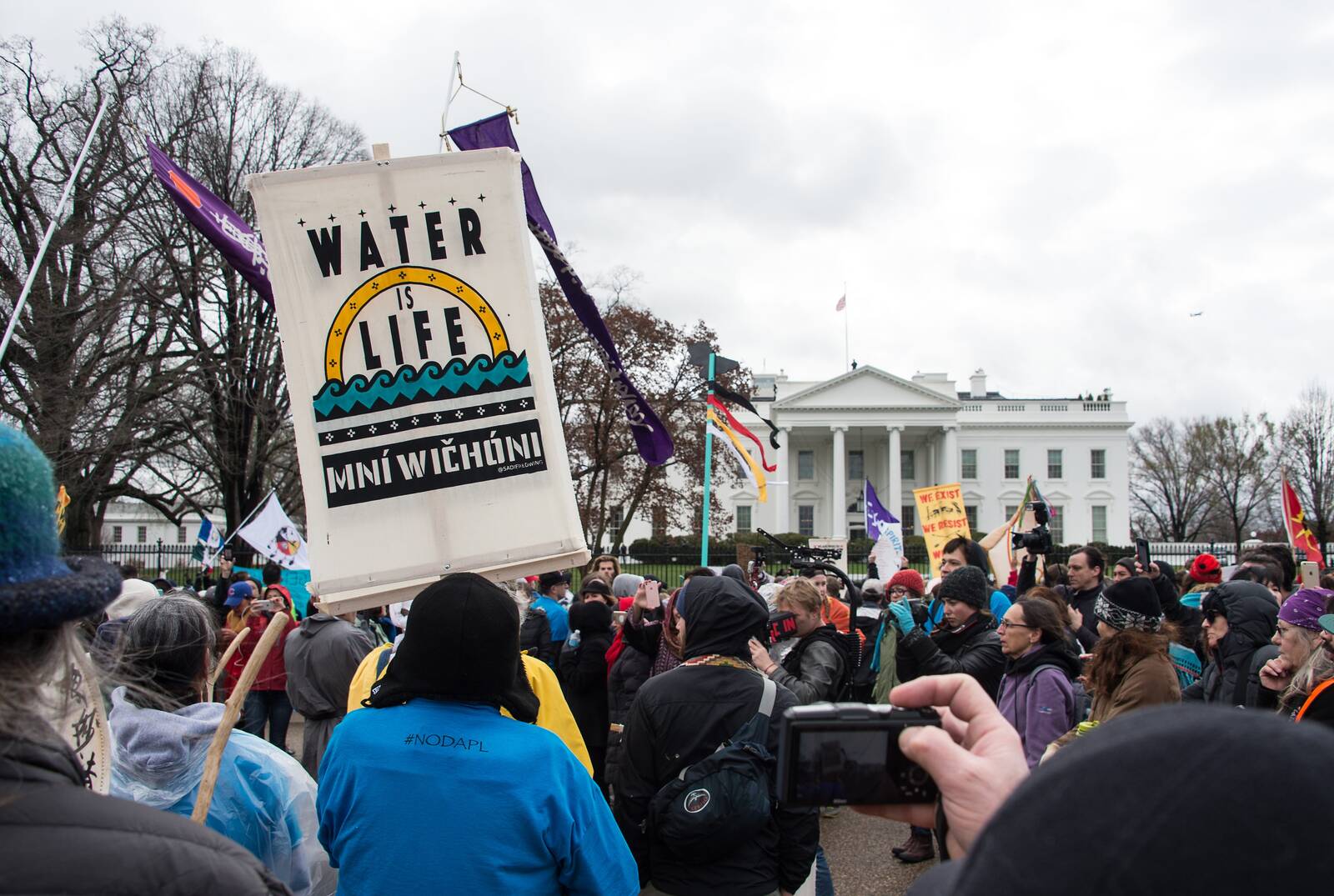
The accord, which went into effect two days before the 2016 election, was the product of years of negotiation and designed specifically to overcome U.S. political opposition. Negotiators saw American participation as crucial, not only because the U.S. was the largest historic contributor of greenhouse gas emissions, but because it had the wealth and clout to bring along other nations.
The Paris Agreement required nations to determine their own goals, report progress, and ratchet up ambition over time, but contained no targets or timetables for cutting carbon emissions. Goals were voluntary, with no penalties for failure to achieve them, which meant, in the view of President Barack Obama’s administration, that it was not a “treaty” that would have required ratification by two-thirds of the Senate.
Trump’s advisors disagreed. “It looks like a treaty,” said Rex Tillerson, the former Exxon Mobil chief executive who was Trump’s first Secretary of State, at his confirmation hearing. Yet Tillerson was one of several Trump cabinet members who favored remaining in the Paris deal. He told lawmakers: “It’s important that the United States maintains its seat at the table about how to address the threat of climate change, which does require a global response.”
In one of her first meetings with Trump at the White House, Gunasekara, initially a senior policy advisor at the EPA, recalls working to counter this position, along with her boss, then-EPA administrator Scott Pruitt, and his chief of staff, Ryan Jackson. The three EPA staffers, all proteges of longtime climate action foe, the late Sen. James Inhofe (R-Okla.), found themselves outnumbered by cabinet members and others who wanted to stay in the pact. Gunasekara, who had attended the Paris talks, argued the fact that the agreement was not ratified by the Senate made it easier to unwind.
On June 1, 2017, Trump announced he would withdraw from the Paris accord due to the “draconian financial and economic burdens the agreement imposes on our country.” Citing a study by an oil and gas industry consulting firm sponsored by the U.S. Chamber of Commerce, Trump said the agreement would cost the United States $3 trillion in lost GDP and 2.7 million jobs by 2025, including 440,000 in manufacturing.
Gunasekara believes the jobs impact data was decisive for Trump.
“The President really focused on reinvigorating the life of the American worker, with ensuring and growing the opportunity for a job, and the affiliated community investments and growth alongside of that,” she said.
As it turned out, the U.S. would lose 2.7 million jobs during the Trump administration due to the precipitous economic slowdown during the COVID-19 pandemic. Statistics so far do not bear out the argument that participating in the Paris accord has been devastating to the U.S. economy. Since Biden re-entered the pact, U.S. GDP has grown by nearly one-third, or $6.9 trillion compared to the Trump administration’s 2019 pre-COVID high. Since then, U.S. employment also is up by 5 percent, or 7.5 million jobs, including 130,000 in manufacturing.
Participation or non-participation in the Paris accord appears to have made no difference on coal jobs—which Trump specifically pledged to bring back. Even before COVID, the U.S. lost 7,400 coal jobs at the start of his administration. By the end, that increased to 17,300 coal jobs, a 31 percent decline in total. Coal employment has rebounded under Biden by about 5,700 jobs, but coal production remains anemic, reflecting, in the view of many economists, not policy so much as the industry’s sectoral decline amid competition from cheaper natural gas and renewable energy.
The Trump Doctrine Spreads
Trump’s withdrawal from the Paris accord, and his rationale for protecting the national economy from the demands of international institutions, has resonated with like-minded politicians around the world.
The Green Climate Fund, the world’s largest fund dedicated to helping developing countries respond to climate change, was the first to feel the ripple effect. As part of his retreat from the Paris accord, Trump reneged on $2 billion of the $3 billion pledge Obama made to the Fund, saying it was “costing the United States a vast fortune.” The following year, Australia’s then-Prime Minister, Scott Morrison, followed suit, saying his country would no longer “tip money into that big climate fund.” Russia also has not made a substantial contribution to international climate finance since the Paris accord was adopted.
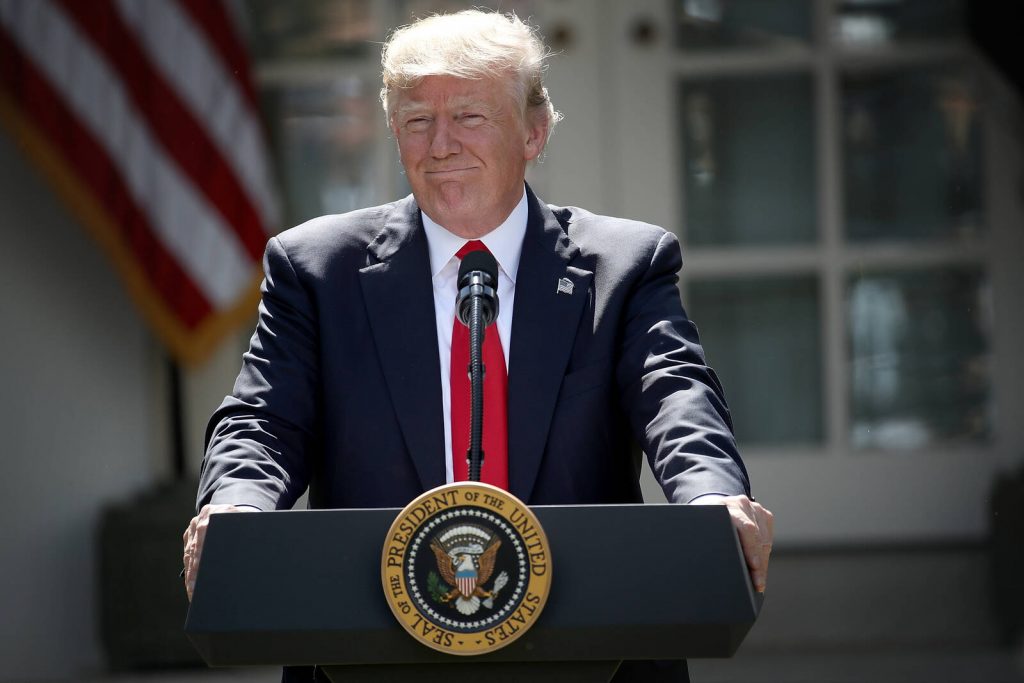
Other countries have tried to fill the gap, but the Green Climate Fund remains far short of the $100 billion per year in climate finance that the U.S. and other developed nations promised to mobilize from both public and private sector sources by 2020. Biden has not been able to get Congressional approval to fulfill Obama’s original pledge but has drawn $1 billion from discretionary State Department funds. Lamenting the situation at last year’s climate talks, Mohamed Adow, director of the environmental group Power Shift Africa, told The New York Times: “The problem is, the U.S. is not a reliable partner.”
Joseph Majkut, director of the energy security and climate change program at the Center for Strategic and International Studies (CSIS), said Trump’s withdrawal from the Paris accord brought home to global participants that the agreement—despite its nationally determined contributions and its voluntary aspects—had not defused U.S. partisanship over climate.
“The world came to understand that this was still going to be a political issue in the United States,” Majkut said. “For those of us in the arena in Washington, and reporters who covered the national scene, that was well understood. I think that was a bit of a surprise to a lot of leaders around the world.”
“What you see in far right movements in the U.S. and other places is this feeling that the climate change movement has gone too far. And that it’s doing things that people don’t want, it’s making things expensive, it’s forcing products on them that they don’t want to buy.”
Trump’s brand of climate action skepticism is surfacing across Europe, where climate change historically had not been as politically polarized as it was in the United States. Last month, European Union countries significantly weakened their long-awaited Nature Restoration Law before approving it, after a political uproar by conservative politicians, the agriculture industry and protesting farmers. Far-right populist political parties in the United Kingdom, the Netherlands and France campaigned in the past year on calls to ditch climate pledges. Although none of them won control of government in recent elections, all expanded their presence in parliaments and their clout.
“I see Trump as part of this larger movement rather than as a cause of the larger movement,” said Samantha Gross, director of the Brookings Institution’s energy security and climate initiative. “What you see in far right movements in the U.S. and other places is this feeling that the climate change movement has gone too far. And that it’s doing things that people don’t want, it’s making things expensive, it’s forcing products on them that they don’t want to buy.”
Gross said that for climate policy to endure, advocates must be able to show there are benefits for citizens, not just costs. Biden’s 2020 “Build Back Better” election platform was an effort to make the case that investment in addressing climate change would generate economic revival and benefit American workers. His Inflation Reduction Act and its unprecedented $370 billion in federal clean energy investment has spurred hundreds of projects across the country that are expected to generate more than 108,000 new jobs, according to tracking by the advocacy group Environmental Entrepreneurs.
The 2024 election will in part be a referendum on whether Biden has been able to make the case that his climate policy has been a boon to workers and the U.S. economy, in the face of Trump’s declarations that climate policies like Biden’s efforts to spur adoption of electric vehicles will end in an economic “bloodbath” for the country.
‘The Best Environmental Numbers’
As Trump seeks a second term in office, his team does not dismiss the goals of environmental protection, and they steer clear of disputing climate science. Instead, they argue that Trump does not get the credit he deserves for environmental successes on his watch—including on greenhouse gas emissions—even as he ramped up fossil fuel production.
“I think the economy and the energy economy were really thriving,” said Neil Chatterjee, who chaired the Federal Energy Regulatory Commission under Trump, noting that the U.S. became a net energy exporter for the first time in nearly six decades in 2019. “And despite some of the headlines from the president, carbon emissions declined during his tenure in office. And so I think from an economic standpoint, from a geopolitical standpoint, and quite frankly, from an environmental standpoint, the Trump administration’s energy policies were quite successful.”
U.S. greenhouse gas emissions declined 11 percent during the Trump administration, with most of that fall occurring in 2020 due to the pandemic. Other pollutants had fallen even before the pandemic: From 2016 to 2019, sulfur dioxide was down 27 percent; smog-forming nitrogen oxides, 13 percent; and particulate matter, 8 percent.
“During my four years, I had the best environmental numbers ever,” Trump bragged during the June 27 debate.
But government energy economists have attributed much of the pollution fall to the market-driven plummeting of coal-fired power and vehicle efficiency improvements mandated before Trump took office. He supported coal and opposed increasing vehicle emissions standards once he became president.
Some of the achievements that occurred on his watch proved ephemeral, as U.S. particulate matter pollution rose sharply in 2020 and 2021 and has remained elevated due to the increase in large wildfires. Other pollutants also rose at least temporarily as the economy rebounded from the pandemic.
Moreover, analysts who have studied the Trump administration’s environmental impact have concluded that the fall in greenhouse gas emissions during his administration—about 596 million metric tons—was erased by the impact of his regulatory rollbacks. Trump’s abandonment of Obama-era climate measures—most significantly, steps to reduce vehicle emissions in later model years—could be responsible for adding 1.8 billion additional metric tons of greenhouse gases to the atmosphere by 2035, according to estimates by Rhodium Group.
Biden may be able to reduce that impact, but his efforts to reverse the Trump anti-regulatory legacy are still in their early stages. In the meantime, “those emissions stay in the atmosphere for decades or centuries,” noted Michael Gerrard, director of the Sabin Center for Climate Change Law at Columbia University. “So it’s basically cumulative. That’s another lasting impact of the Trump administration.”
The Sabin Center, which set up a website to track Trump’s actions to loosen government standards, counted 176 deregulatory actions during his tenure. In addition to rolling back vehicle standards just as transportation was overtaking electricity as the top U.S. source of climate pollution, Trump put a stop to a program to control methane leaks from oil and gas operations, ended a plan to phase out hydrofluorocarbon refrigerants despite industry support and rolled back appliance efficiency standards that save money for consumers as well as cutting pollution.
Trump’s affiliates argue that these actions do not reflect a dismissal of climate change but a placing of climate change in its proper place among all other environmental priorities. “It’s an important environmental issue, but it shouldn’t overshadow other important environmental issues,” Gunasekara said. “Reducing greenhouse gases is just as important as reducing traditional air pollutants, addressing groundwater and drinking water pollution as well as addressing legacy pollution. So it’s really creating that level playing field in terms of policy goals and priorities.”
During the June presidential debate, Trump summed up that view: “I want absolutely immaculate, clean water, and I want absolutely clean air.”
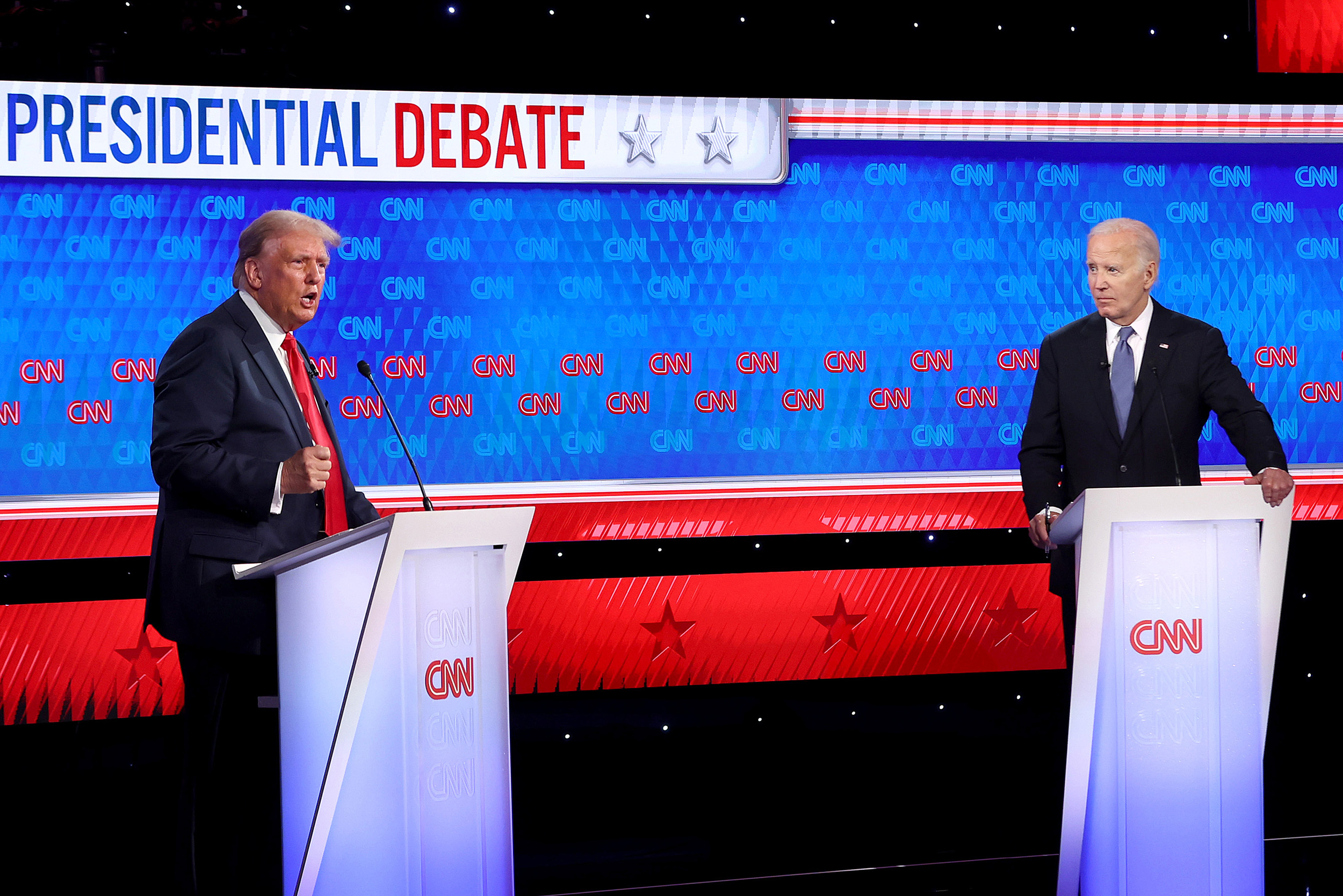
But Trump’s administration weakened regulations to protect air and water from pollutants other than carbon dioxide. With a former coal industry lobbyist running the EPA and an erstwhile Dow Chemical lawyer in charge of the Superfund toxic waste program, his administration rejected government scientists’ recommendation that the government tighten the federal standards to control fine particulate matter pollution, despite their calculation that it could save as many as 34,600 lives a year, particularly in poor urban communities.
Trump’s EPA rolled back an Obama rule to control coal ash, the residue left after burning coal, often stored in piles near power plants, that can leach mercury, arsenic and other toxins into water systems. His administration also eliminated many wetlands and streams from coverage under the Clean Water Act, leaving no protection for water sources that scientists estimate account for more than 50 percent of the flow in downstream river systems.
On the eve of the 2020 election, however, Trump made a series of overt moves on environmental protection that had staying power. In early September, he appeared in Jupiter, Florida, to endorse a 10-year moratorium on oil and gas drilling off his adopted state’s coastline—a pause that his own administration had proposed lifting. In that same speech, with EPA Administrator Andrew Wheeler, the former coal lobbyist, looking on, Trump announced his administration was “strengthening standards to prevent vulnerable children from being exposed to lead and copper in drinking water, including in our schools.”
By proposing the first overhaul in 30 years in the federal standards for lead and copper in drinking water, Trump’s administration made itself look proactive compared to the Obama administration, which was too embroiled in reacting to the immediate crisis in Flint, Michigan, in its final year to get new rules written. Gunasekara, by then chief of staff at Trump’s EPA, said the lead rules were “really an example of when we really shifted the focus back to the American people and domestic impacts.”
Some environmentalists saw the Trump administration lead rules as too weak, and last year, the Biden administration sought to strengthen them, proposing to replace all lead pipes within the next decade. But one Trump move in 2020 has won nearly universal praise from environmentalists: the push for and signing of the Great American Outdoors Act, a law that provides as much as $2.8 billion a year for public lands, outdoor recreation, maintenance and restoration, and new green spaces. The law provided a means to tackle an enormous maintenance backlog in national parks and forests.
“It was the law of a lifetime,” said Kristen Brengel, senior vice president of government affairs at the National Parks Conservation Association. “Such a massive investment in our future as a country that is intentional and forward thinking—we don’t always get to do that in the conservation world. Sometimes we’re just fighting battles against a mine or an oil and gas project.” The Great American Outdoors Act, she said, was “entirely proactive, to say my kids and grandkids are going to have a better experience in our national parks and public lands.”
Work on the bipartisan legislation began near the start of Trump’s term, but the president got involved near the end at the behest of two Senate Republicans who were facing tough re-election battles in 2020, Cory Gardner of Colorado (who lost) and Steve Daines of Montana.
In the view of public lands advocates, however, Trump’s administration is most remembered for the massive loss of protected areas. He opened up new areas to drilling and grazing. The Arctic National Wildlife Refuge, which environmentalists had succeeded in keeping off-limits to oil drilling for 30 years, was opened up to exploration as part of Trump’s tax cut bill—making that decision difficult to reverse. Trump was the first president to reduce the size of national monuments that had been designated by his predecessors, by shrinking Grand Staircase-Escalante and Bears Ears monuments in Utah.
This story is funded by readers like you.
Our nonprofit newsroom provides award-winning climate coverage free of charge and advertising. We rely on donations from readers like you to keep going. Please donate now to support our work.
Donate NowThe latter, designated by Obama, was especially jarring because it had been part of an effort to restore to indigenous peoples oversight of lands their tribes had lost long ago.
“For Trump to undo it was a slap in the face to indigenous groups who had worked so hard to get that area protected,” said Athan Manuel, director of the Sierra Club’s lands protection program. “It was just a sign of his disregard for the role public lands play and in the American identity and our local economies and in the whole conservation history of the country.”
After the public backlash on the Utah lands decisions, the Trump administration did not pursue a much longer list of national monuments it sought to reduce in size, and it took steps that it said would protect the portion of Bears Ears that remained. Biden ultimately restored protections for the national monuments, a decision a federal court upheld last year.
A Supreme Court-Aided Legacy
But other Biden administration efforts to undo Trump’s deregulatory actions have run into headwinds that Trump himself created when he nominated three Supreme Court justices, solidifying a majority that is deeply skeptical of federal agency restrictions on business.
That became apparent early on, when the court ruled that Obama’s plan to cut greenhouse gas emissions from power plants had been illegal, even though the program was not in effect at the time and the Biden administration made clear it would not revive it. The Biden administration waited a year for that decision, and spent nearly two more years coming up with its own complex rules, which were promptly challenged. The bottom line: Greenhouse gases from U.S. power plants are still unregulated. The high court also significantly curtailed the protections of wetlands under the Clean Water Act, essentially endorsing the Trump administration’s position.
But the biggest legal upheaval came at the end of the Supreme Court’s current term last month, when the six-justice conservative majority swept away the 40-year-old Chevron doctrine, and ruled that judges should not give deference to federal agency interpretations of law. The result, which conservative activists have sought for years, gives an advantage to businesses and Republican-led states that are challenging most of Biden’s environmental initiatives, including every one of his climate-focused regulations.
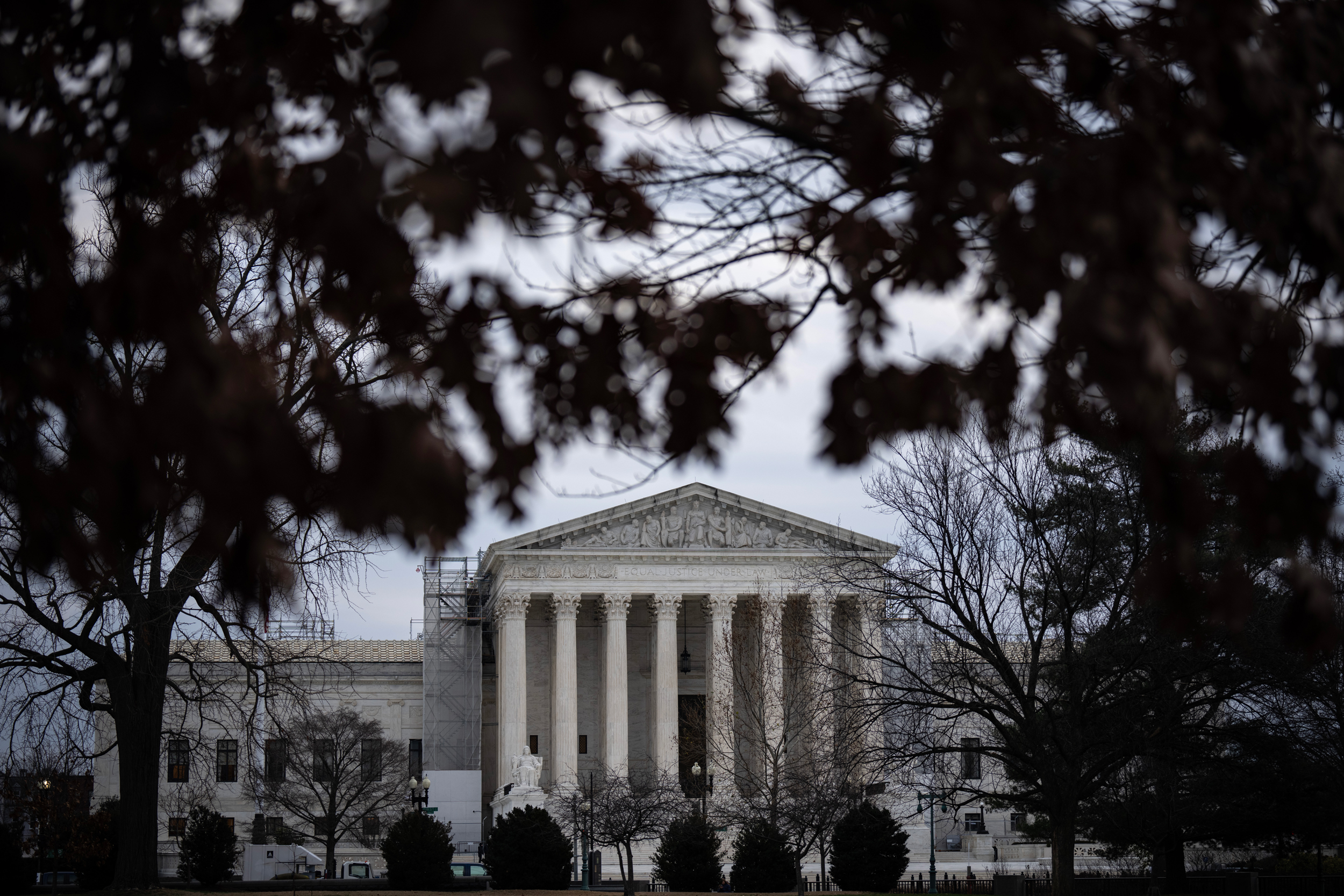
“Climate policy through regulation is very uncertain,” under the law as interpreted by the current Supreme Court majority, said Gerrard of the Sabin Center. And although Biden’s policy of spurring clean energy through federal investment may be more difficult to undo, since it was passed by Congress, most experts believe that to meet his ambitious climate goals, regulations also will be required. “These regulations are really in peril, thanks to the Supreme Court and the lower court judges appointed by Trump,” Gerrard said.
Those who support Trump’s approach believe that the Supreme Court has set the stage for deregulation no matter who is elected in November.
“I think even if President Biden is re-elected, I think significant elements of his regulatory agenda could still be blocked, and I think a second Trump administration would rescind those regs,” Chatterjee, Trump’s FERC chairman, said. He does not believe utilities will make investments in anticipation of the Biden rules taking effect, as they did at the time Obama originally proposed his Clean Power Plan. “People are going to wait to see how the legal process plays out,” Chatterjee said.
The changed legal landscape is just one of the factors that could help a second Trump administration go much further than the first one to upend U.S. environmental protection. His team also has had a chance to see how Biden has sought to undo his legacy, and have thought of strategies to solidify Trump’s actions.
For example, Project 2025 advocates not just withdrawal from the Paris climate accord, but from the underlying treaty, the 32-year-old United Nations Framework Convention on Climate Change, which would end such obligations as annual reporting on the nation’s greenhouse gas inventory. Another Project 2025 co-author, William Perry Pendley, Trump’s former acting director of the Bureau of Land Management, reiterated in a recent op-ed his long-held view that federal lands should be sold off to private developers—this time, he proposed it as a solution for the housing crisis in the West. Trump has sought to distance himself from Project 2025, but Pendley was endorsing an idea that Trump himself proposed last year—the establishment of “Freedom Cities” on federal lands to “reopen the frontier.”
Energy is the use of federal lands Trump mentions most frequently as high on his second-term agenda. In response to a query meant to reassure voters worried about his authoritarian tendencies, Trump said he wanted to act as a dictator only on Day One of his administration, in order to close the southern border and “drill, drill, drill.”
“He’s made very clear that he wants to reinstitute an energy dominance agenda,” Gunasekara said, “but also making clear that he wants that balanced alongside continued environmental improvements.”
Environmentalists argue the climate crisis can only worsen in a second Trump term, given his record and his bald offer to oil executives this past spring to remove environmental restraints in exchange for $1 billion in campaign funding.
“Trump is worried about himself and his corporate polluter allies, and we saw that over and over again,” said Sittenfeld, of the League of Conservation Voters, “When people show you who they are, believe them.”
About This Story
Perhaps you noticed: This story, like all the news we publish, is free to read. That’s because Inside Climate News is a 501c3 nonprofit organization. We do not charge a subscription fee, lock our news behind a paywall, or clutter our website with ads. We make our news on climate and the environment freely available to you and anyone who wants it.
That’s not all. We also share our news for free with scores of other media organizations around the country. Many of them can’t afford to do environmental journalism of their own. We’ve built bureaus from coast to coast to report local stories, collaborate with local newsrooms and co-publish articles so that this vital work is shared as widely as possible.
Two of us launched ICN in 2007. Six years later we earned a Pulitzer Prize for National Reporting, and now we run the oldest and largest dedicated climate newsroom in the nation. We tell the story in all its complexity. We hold polluters accountable. We expose environmental injustice. We debunk misinformation. We scrutinize solutions and inspire action.
Donations from readers like you fund every aspect of what we do. If you don’t already, will you support our ongoing work, our reporting on the biggest crisis facing our planet, and help us reach even more readers in more places?
Please take a moment to make a tax-deductible donation. Every one of them makes a difference.
Thank you,










